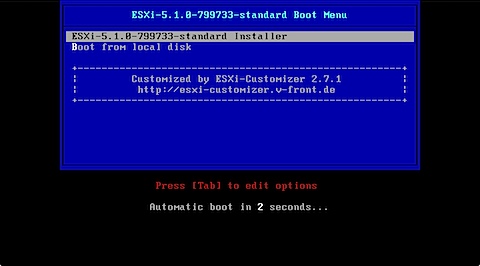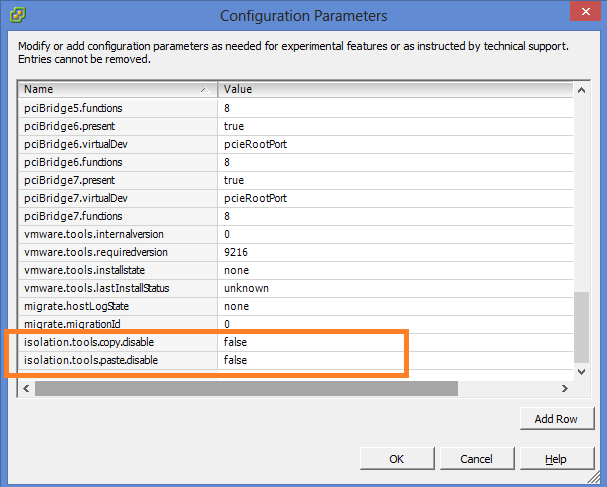Looks like a corrupted installation, re-install ESXi. It will detect and prompt if it finds an existing VMFS partition (where the VMs are located). Select Preserve VMFS, and re-install. With ESXi 6.5, we take this capability of the firmware storing digital certificates and validating the boot loader and we build upon that. ESXi is comprised of a number of components. There is the boot loader, the VM Kernel, Secure Boot Verifier and VIBs, or “vSphere Installation Bundles”. Each of these components is cryptographically signed.
In some previous posts here at mobiletiger I explained how to use different ways to install ESXi, mostly to get a workaround for some N3150/J3160 systems, which „freeze their screen“ after outputting the message „relocating modules …“
|
1. Kickstart overview
I’m showing here, how to modify an ESXi ISO file, so that the installation runs completely automatically from USB.
This can be used in principle on all systems, of course also on the above described or on „headless systems“ without connecting a display.
Esxi Installer Fatal Error 33 Free
To get a complete overview or to get a detailed list of installation methods and commands, please read the original document from vmware:
https://pubs.vmware.com/vsphere-65/topic/com.vmware.ICbase/PDF/vsphere-esxi-vcenter-server-65-installation-setup-guide.pdf
2. ISO image preparation

You’ll need a server with more than 4 GB RAM, at least two cores, SSD/harddisk and an empty USB stick (>=8GB).
CAUTION: DATA WILL BE OVERWRITTEN on USB stick and on your server. So use this procedure at your own risk!
First of all you’ll need an ESXi ISO file, perhaps a modified file which contains custom drivers for your system. Read my other article for some tips how to create your own custom installation ISO file or have a look here: http://www.v-front.de/p/esxi-customizer-ps.html
I made a custom ISO file with this command (see v-front.de for details):
.ESXi-Customizer-PS-v2.5.1.ps1 -v65 -vft -load net55-r8168,net51-r8169,sata-xahci
This image currently contains additional drivers for some ASRock and similar systems, e.g. Q1900/N3150/J3160/J3455-ITX
Download link is here: https://esxi.jorba.de/ESXi-6.5.0-20171204001-standard-customized.zip
(Updated Image 2018/02/03)
Than create a bootable USB stick (size >= 8GB), for example use portable Rufus for this task.
Download portable Rufus from here: https://rufus.akeo.ie/?locale=en_US

Insert an empty USB stick, use the above parameters and select your ESXi ISO image, than click on Start button to create a bootable USB installation.
(Again the warning not to overwrite some important data!)
Download boot.cfg and ks-nowipe.cfg from my blog and copy (replace) them on the USB stick. These are the kickstart files.
Download links:
https://esxi.jorba.de/ipxe/ESXi-6.5.0-20170304101/usbboot/boot.cfg
https://esxi.jorba.de/ipxe/ESXi-6.5.0-20170304101/usbboot/ks-nowipe.cfg
3. Boot from USB and start installation
Insert USB stick into your server, boot from USB
–> BIOS needs to be setup in legacy boot / compatibility mode (not UEFI).
–> Installation will need about 10 minutes to complete, there will be a reboot
Wait for completion!
Install Esxi 6.5
Post installation customization
Embedded host client
Fatal Error Zenekar
After installation, you can manage the system with the embedded host client inside your browser: http://<ip-address>/ui
You will find the ip address inside your router’s DHCP status table.
Login credentials
The managing user is „root“, the initial password can be set in the ks-nowipe.cfg installation file.
If you use my above file without changes, the login it is simply „root/password„, so change it immediately 😀
ESXi shell / ssh
My kickstart files enable ESXi shell and ssh.
This are useful management tools, but if don’t need them, switch them off using the management client.
Direct console (DCU)
If the „direct console (DCU)“ is not working on your server due to missing video output or because you use the server „headless“, is can be accessed via SSH (if you leave it enabled).
Start putty or another ssh-tool, connect to your ESXi Server and enter the following commands:
export TERM=linux
dcui
ESXi console via SSH
Periodic Backup
A really good free backup script for ESXi is ghettoVCB:
http://www.virtuallyghetto.com/2015/05/ghettovcb-vib-offline-bundle-for-esxi.html
Feedback
Fatal Error In Php
This post was updated several times and will be updated periodically in the future.
Feedback welcome.
Antonio Jorba

